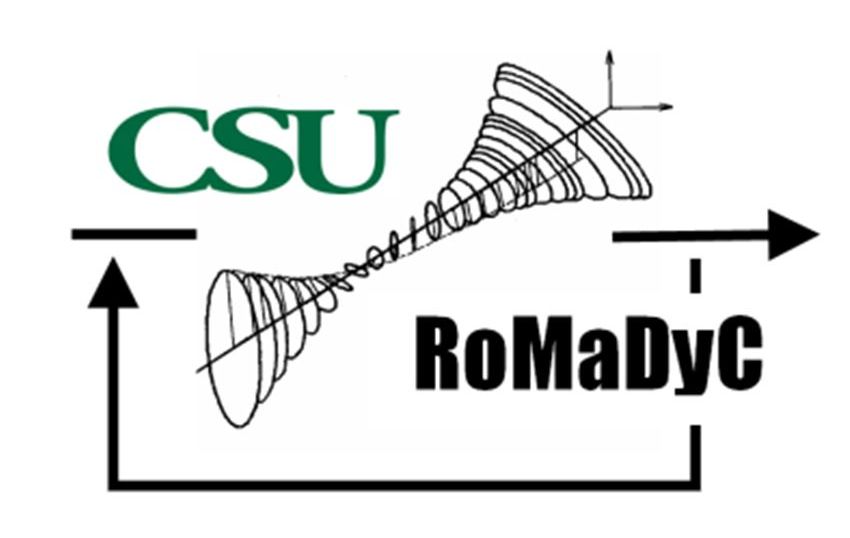Chatter Suppression in High-Speed Machining
Machining chatter is a self-excited vibration occuring between the cutting tool and workpiece. Large amplitude vibrations caused by chatter may lead to damaging the cutting tool and/or the inability to hold part tolerance. It follows that the onset of chatter is a significant limiting factor in material removal rates when machining. To maximize the productivity of the machining process, chatter must be avoided through laborious tuning of the tool stiffness and spindle speed.
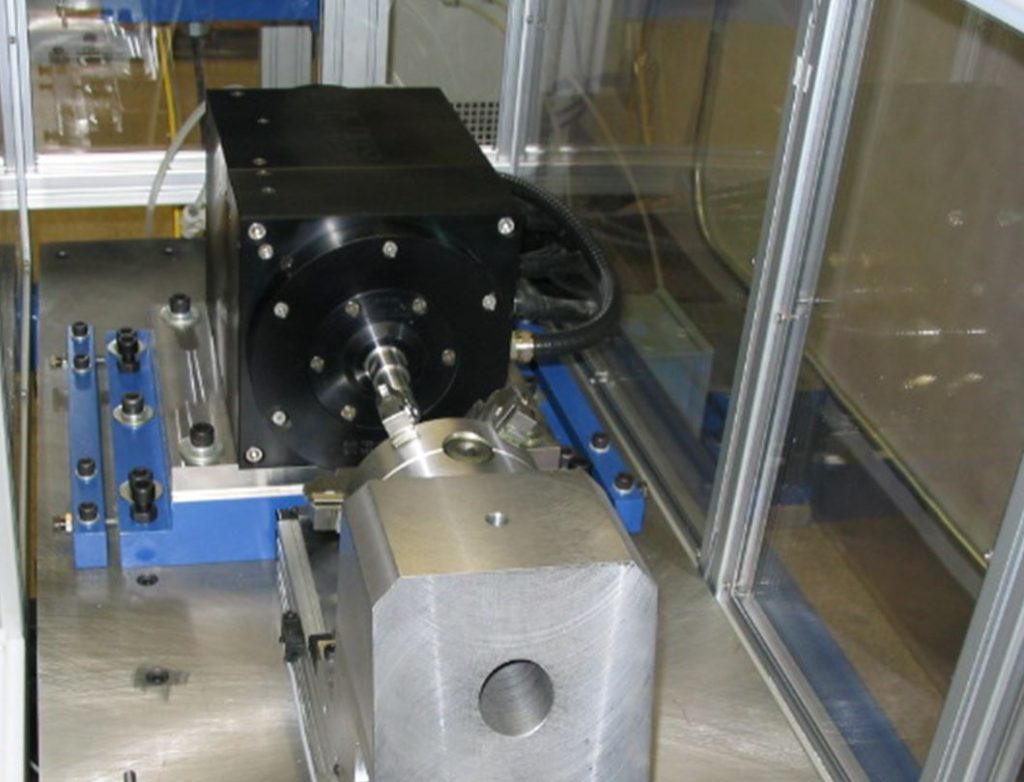
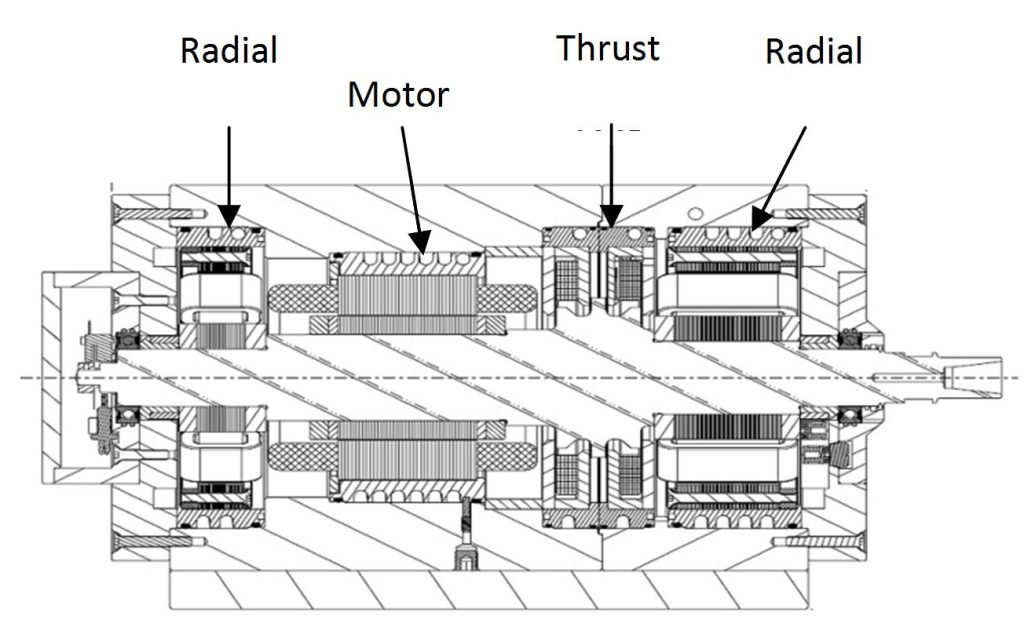
A spindle supported on active magnetic bearings (AMBs) has the opportunity to attenuate machining chatter through robust control of the AMBs. The robust control chatter-avoiding strategy includes a cutting force model in addition to the spindle model in controller design. The resulting controller stabilizes both the chatter and the instability inherent in the AMBs. A high-speed AMB boring spindle at the Center for Rotating Machinery Dynamics and Control (RoMaDyC) serves as the platform for this research. The μ-synthesis technique has been used to design a robust MIMO controller for magnetic levitation and chatter prevention. Uncertainties are utilized in the cutting force model, maximizing the chatter-free region over the entire running speed of the spindle. The resulting controller is compared to a nominal robust controller designed without the cutting force model. A significant increase in the critical feed-rate before the onset of chatter is found, indicating that the chatter prevention controller enables faster feed rates. This increase can be seen in the comparison of the experimental stability lobe diagrams for each AMB controller.
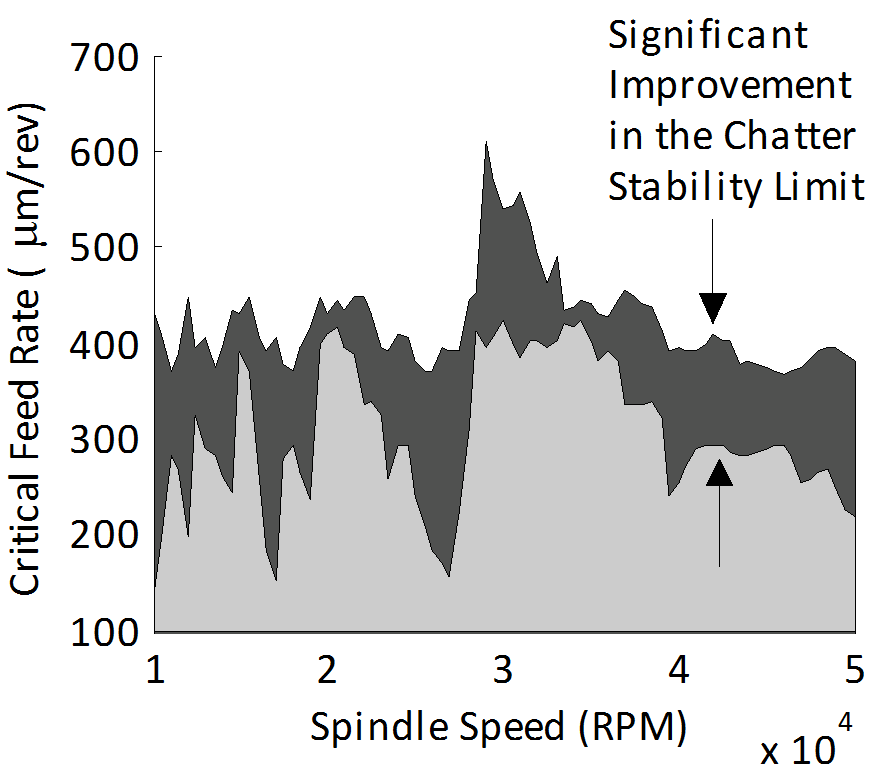
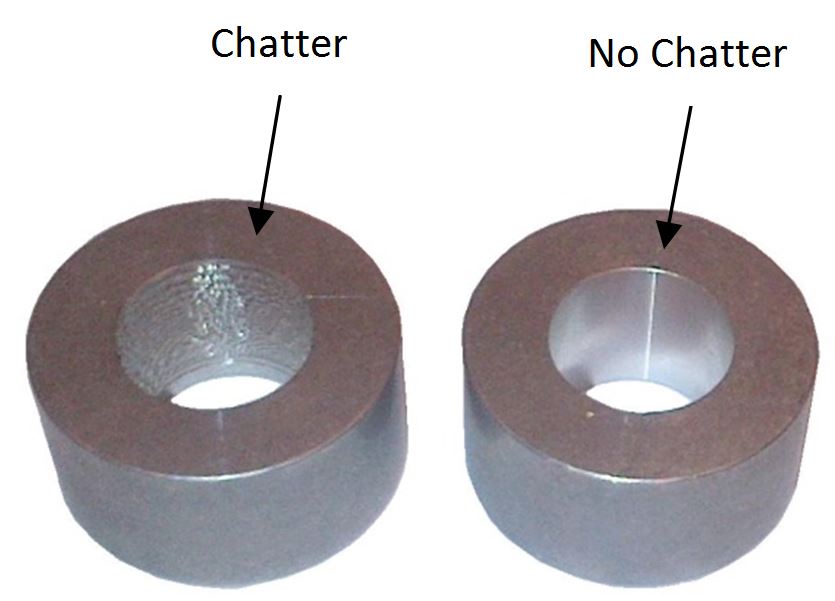
The future chatter prevention research is in its application to flexible workpieces. A flexible workpiece, such as a thin walled part, is especially susceptible to chatter because it can deflect under cutting forces. This type of chatter can only be addressed by a counteracting flexibility in the cutting tool. A spindle on AMBs is an advantageous solution because the active control can be exploited to robustly attenuate the vibrations in the flexible workpiece. Similar to the work in chatter prevention, the addition of an uncertain flexible model may help to prevent the chatter caused by a flexible workpiece. Contact: Student: Alex Pesch Faculty: Dr. Jerzy T. Sawicki
